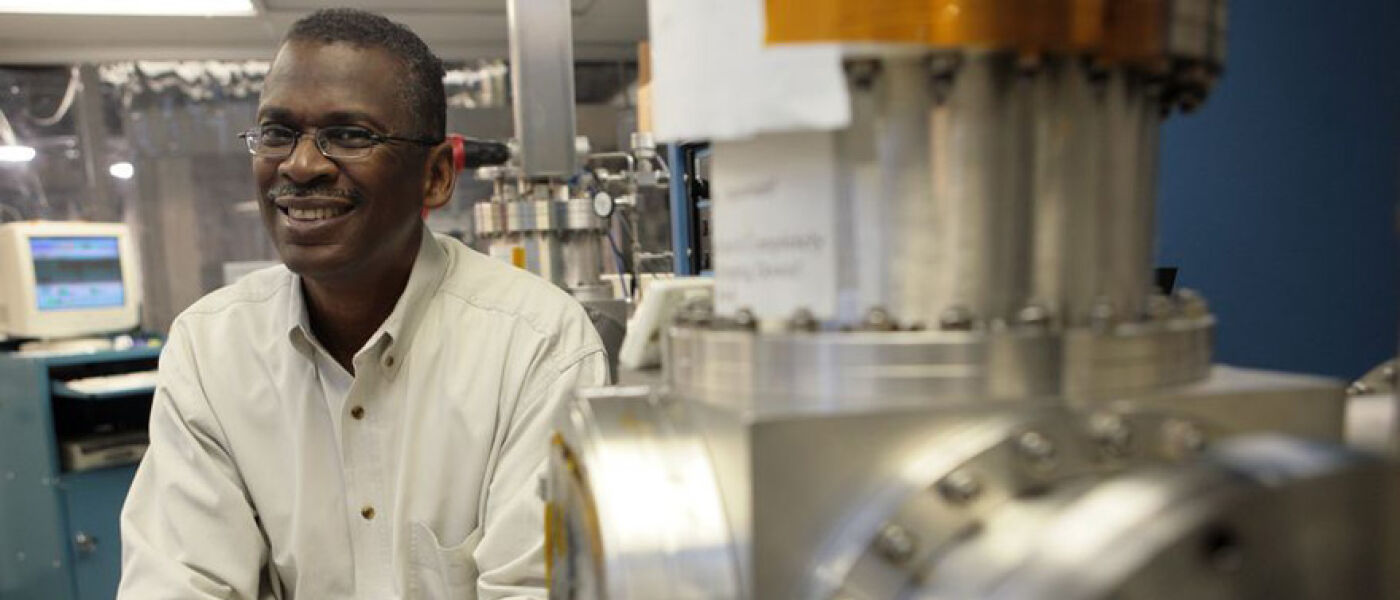BHM Highlight: Lonnie G Johnson, Air Force engineer and inventor of the Super Soaker
Credit: AJC file photo.
Throughout Black History Month the Liberty Science Center blog is highlighting African American scientists to continue our mission of getting learners of all ages excited about the power, promise, and pure fun of science and technology.
There are maybe three inventions I have that I rank as my top inventions that I’m most proud of. The robot I built in high school, the memory-protected circuitry for the Galileo, and the Super Soaker. -Lonnie G. Johnson
Lonnie George Johnson was born on October 6, 1949 in Mobile, Alabama. His father was a WWII veteran who worked at a nearby Air Force base as a civilian driver and Lonnie’s mother worked as a nurse’s aide. Due to financial restraints, Johnson’s father, a skilled handyman, taught his children how to build their own toys. Johnson became fascinated with how things operated. Much to the dismay of his family, he would pull apart his sister’s dolls to see how the eyes closed, installed a lawn mower motor into a go cart and drove it until the police pulled him over, and once almost burned his family’s house down while trying to create rocket fuel. He dreamed of becoming a famous inventor, but growing up in Mobile in the days of legal segregation, he was told to not aspire to become more than a technician. Drawing inspiration from George Washington Carver, Johnson was not easily discouraged.
Known as the “The Professor” by his friends, Johnson attended the African-American Williamson High School. In 1968 he represented Williamson at an engineering competition sponsored by the Junior Engineering Technical Society at the University of Alabama. He was the only African-American contestant. Johnson presented a compressed-air-powered robot named “Linex” he built from junkyard scraps over the course of the year. Much to the disappointment of the university officials, Johnson won first prize.
After graduating Williamson’s last segregated class in 1969, Johnson attended Tuskegee University on a scholarship where he earned his bachelor’s degree in mechanical engineering in 1973. He continued his education at Tuskegee and received his master’s in nuclear engineering in 1976. Johnson joined the U.S. Air Force and was assigned to the Strategic Air Command where he helped develop the stealth bomber program. He then moved on to NASA’s Jet Propulsion Laboratory in 1979 as a systems engineer for the Galileo mission to Jupiter and the Cassini mission to Saturn.
Despite Johnson’s busy schedule, he managed to find time to pursue his own inventions. In 1982 he completed a prototype of an environmentally friendly heat pump that used water instead of Freon. He decided to test it in his bathroom where he aimed the nozzle into his bathtub, pulled the lever and blasted a powerful stream of water into the tub. As if a child again, Johnson was overcome with pure glee as his original idea had now transformed to the first model of the super soaker! After seven years of tampering, perfecting and sales pitching, during which he left the Air Force and went into business for himself, Johnson finally sold his invention to the Larami Corporation. The original name the “Power Drencher” did not entice many sales, but after improved marketing efforts, the “Super Soaker” became a huge success. It topped $200 million in sales in 1991 and went on to annually rank the world’s top 20 best-selling toys.
Due to the massive success of the Super Soaker, Johnson founded Johnson Research & Development which led him to acquire more than 80 patents. While some of Johnson’s inventions failed other’s, such as a ceramic battery, became a commercial success. Another invention was the Johnson Thermoelectric Energy Converter (JTEC). Johnson sought to develop an advanced heat engine that could convert solar energy into electricity with the twice the efficiency of existing methods. He believed a successful version of the JTEC had the potential to make solar power competitive with coal, fulfilling the dream of efficient, renewable solar energy. He eventually obtained much-needed funding from the Air Force in order to continue working on this project. In 2008, Johnson received the Breakthrough Award from Popular Mechanics for the invention of the JTEC. More recently, he has been working with the Palo Alto Research Center (PARC) in California for further development.
Johnson is a pioneer, a scientist, inventor, innovator and African-American man who worked hard and believed in himself regardless of prejudice. Had he retired upon the patenting of the Super Soaker, he would still go down as one of the most successful inventors and entrepreneurs of his generation. However, he continued to innovate, and is still in the process of perfecting the JTEC which could make him one of the most pivotal figures in the ongoing green technology revolution. The work he has done for the Air Force, NASA, the environment, and children’s toys has been widely influential.
Check out Johnson giving a presentation about the Super Soaker.
STEM blog by Isaiah Findley-Pinnock and Kelly Rose Lynch. Isaiah and Kelly are Marketing Interns here at Liberty Science Center.


